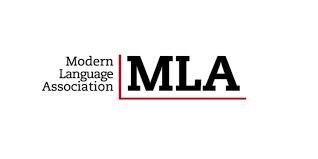This guide provides a comprehensive overview of MLA citation samples, including in-text citations and full references for various types of sources.
Accurate citation of sources is essential to academic writing because it guarantees that original writers receive credit and that ideas are communicated honestly and transparently. The humanities frequently employ the Modern Language Association (MLA) citation format, especially in literature, language studies and cultural research.

What makes a responsible scholar or researcher?
The process of putting together a research project includes information gathering, information analysis and distribution, information collection, and information repurposing.
Keeping track of the sources you used to build your research project, sharing the information you sourced ethically, and providing acknowledgment to the authors of the sources you utilized are all necessary components of being a responsible researcher. By following these steps, plagiarism can be prevented.
What is citation?
A citation indicates to your project’s reader where you obtained the information. When you include a quote in your project, citations go into the project’s body. In the body of the text, citations are also supplied when you paraphrase someone else’s words. In-text citations are citations that appear within the body of a research paper. They are located right next to the borrowed material and are kept brief to prevent getting in the way of reading a project. These brief citations contain the author’s last name and the page number.
Complete citations can be found in an MLA bibliography, commonly known as a works-cited list. The list of references is where you can find all the sources that were used to create a research study. For any quote or material that is paraphrased in the text, full citations are also made. The author, title, publisher, year of publication, page numbers, URLs and a few more details are all included in complete citations.
How to do the citations in MLA
A research paper or project’s MLA Works Cited page is typically located at the conclusion of the document. A list of all the source citations used for the research work is included.
To format the works-cited list in accordance with the Modern Language Association criteria, follow these instructions:
- At the conclusion of a research study, the “Works Cited” page has a separate page.
- Put the page number and your last name in the running head, just like the rest of the project. The project’s final page number can be found on the “Works Cited” page.
- Unless there is just one citation in your list, title the page “Works Cited.” If so, include “Work Cited” in the MLA title.
- The page title (either “Works Cited” or “Work Cited”) is positioned in the center of the document, one inch from the top of the page.
- The entire manuscript should have double spacing, even between the page title and the first citation.
- Citations are arranged alphabetically by the first word in the citation, which is typically the author’s last name or, in the event that the author’s name is not included in the citation, the first word in the title.
- If the title starts with any of these words, ignore it “A”, “An” and “The”.)
- If an author is cited more than once, arrange them chronologically according to the publication date.
- Indicate location where readers can locate the source. Page ranges, URLs, DOI numbers, track numbers, disc numbers, and even cities and towns.
- Generally, URLs don’t need to include http:// or https:// unless you want to hyperlink them. Use http:// or https:// before the DOI when referencing a DOI, such as https://doi.org/xx.xxxx/xxx.xxxx.xxxx.
Read Also: MLA Free Format Sample
EXAMPLE
Soltes, E., & Epley, N. (n.d.).
